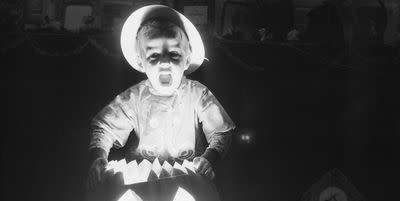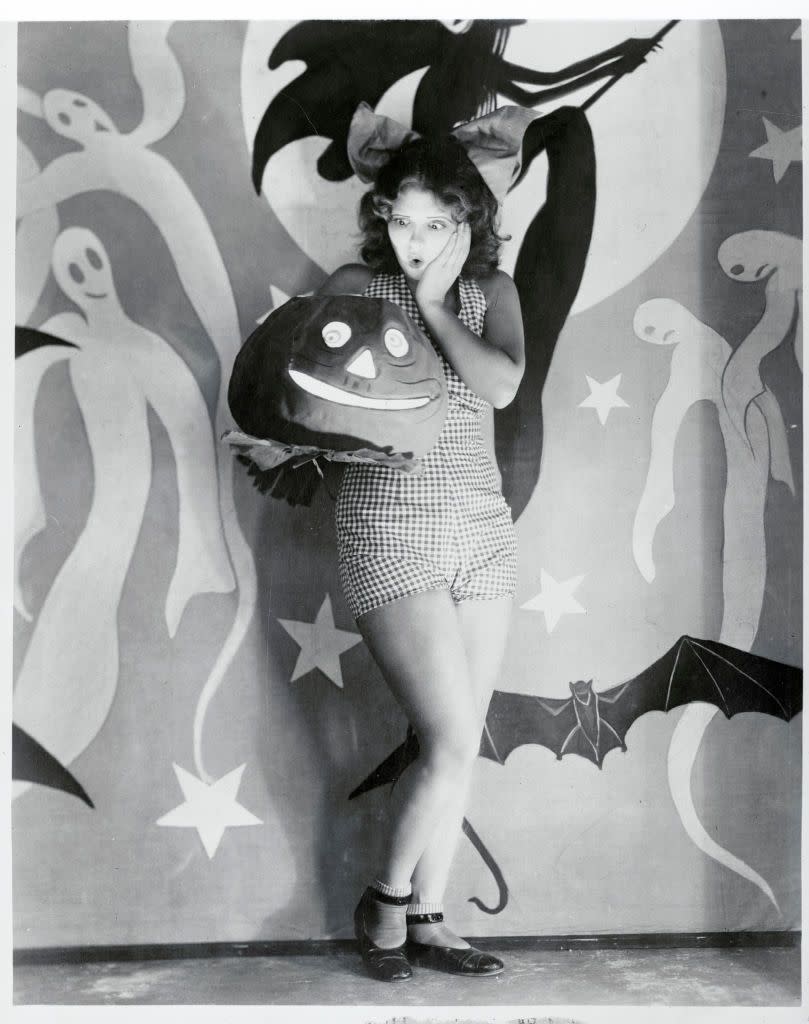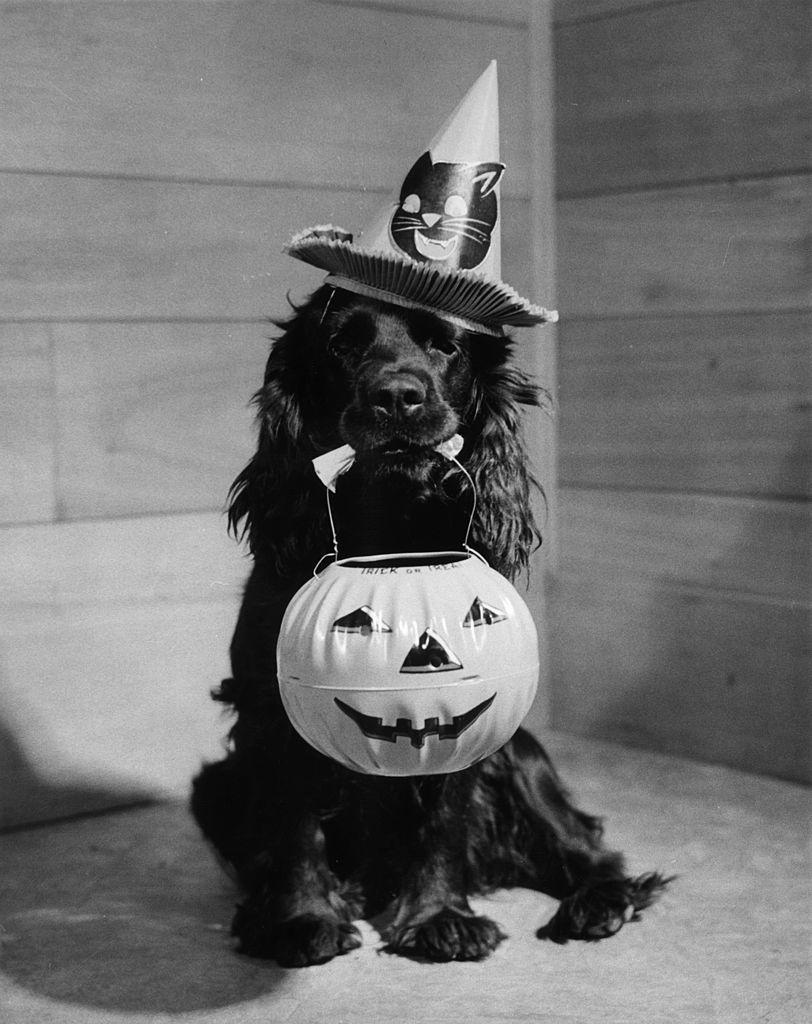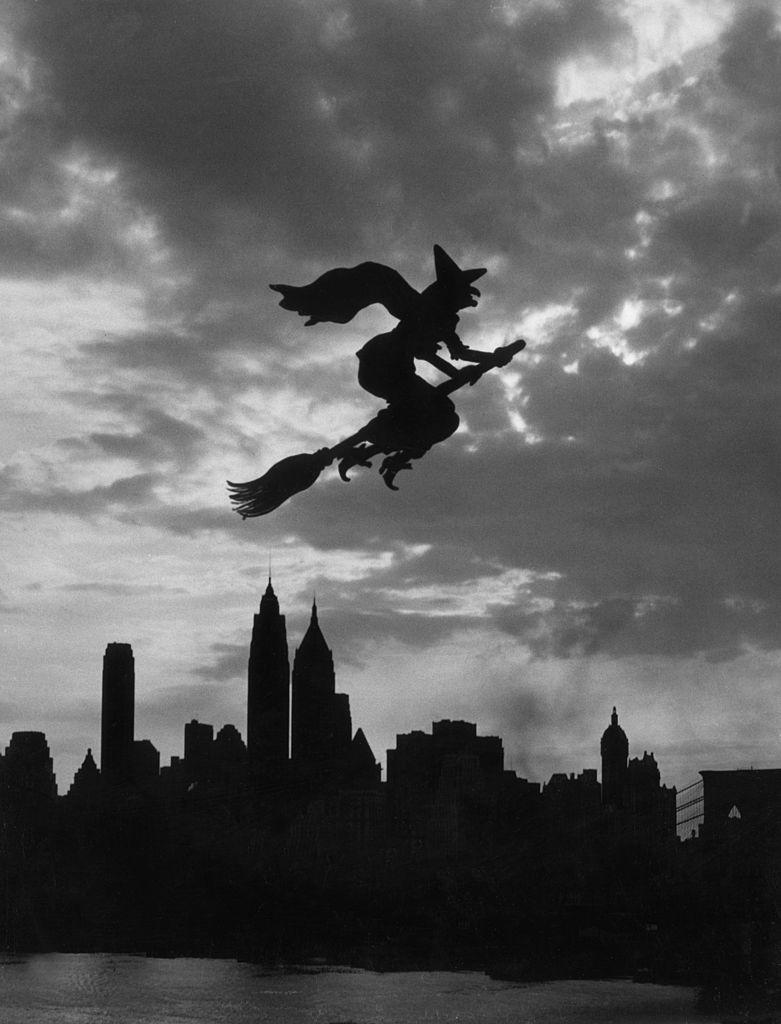What's the Origin of Halloween—and Why Do We Celebrate It on October 31?

The word "Halloween" comes from All Hallows' Eve and means "hallowed evening."
The history of Halloween dates back to a pagan festival called Samhain.
Hundreds of years ago, people dressed up as saints and went door-to-door, which is the origin of Halloween costumes and trick-or-treating.
As the leaves turn vibrant autumn shades, temperatures drop, and you start to pull out sweaters and jackets, it's time to deck out your porch with pumpkins and get to carving. Halloween, celebrated on October 31, is just around the corner, which means an evening of fun filled with costumes, spooky treats, trick-or-treating, Halloween party games, and (for adults only) boo-zy Halloween cocktails.
Amidst all the festivities, do you ever wonder about the origin and history of Halloween, such as what it its meaning and is it pagan or Christian? The answer: It's complicated—and also shaped by secular pop culture through the ages. So let's dive into fun facts about the holiday and how its most popular traditions evolved.
What Does Halloween Mean?
The current English name Halloween traces back to medieval Christianity. The word hallow is derived from the Middle and Old English words for holy. As a noun, it can also mean saint. In those days, the Christian holiday we know as All Saints' Day was called All Hallows' Day, and the day before, when an evening mass was held, was All Hallows' Eve. That three-word name eventually got shortened to Halloween.

Why Do We Celebrate Halloween on October 31?
The ancient Gaelic festival of Samhain, which occurred on November 1 but kicked off the evening before, is considered the earliest known root of some of our secular Halloween traditions. It marked a pivotal time of year when seasons changed, but more importantly, observers also believed the boundary between this world and the next became especially thin, enabling them to connect with the dead. This is also where Halloween gains its "haunted" connotations.
The path to the Christian Halloween date of October 31 is a little more complex. Pope Boniface IV began All Saints Day in the early 7th century when he dedicated the Pantheon in Rome to the saints, but the day was May 13. In the next century, Pope Gregory III changed the day to November 1 when he dedicated a chapel in St. Peter’s Basilica to the saints. Yet another century later, Pope Gregory IV added All Saints Day to the Christian calendar, extending the celebration from Rome to churches everywhere. With All Saints Day came All Hallows' Eve on October 31. This was, perhaps, an effort to offset the pagan occasion with a religious celebration.

The History of Halloween Activities
The early pagan holiday of Samhain involved a lot of ritualistic ceremonies to connect to spirits, as the Celts were polytheistic. While there isn't a lot of detail known about these celebrations, many believe the Celts celebrated in costume (granted, they were likely as simple as animal hides) as a disguise against ghosts, enjoyed special feasts, and made lanterns by hollowing out gourds (hence, the history of jack-o'-lanterns). Over time, as Christianity took over and the pagan undertones of the holiday were lessened, the basic traditions of the holiday remained a part of pop culture every year; they simply evolved and modernized.
The mystical rituals of earlier times evolved into more lighthearted fun and games. For example, the somewhat heavy concept of connecting to the dead was replaced with the more lighthearted idea of telling the future. Bobbing for apples, for example, became popular as a fortune-telling game on All Hallows' Eve: Apples would be selected to represent all of a woman's suitors, and the guy—er, apple—she ended up biting into would supposedly represent her future husband. In fact, Halloween previously posed a huge (albeit rather superstitious) matchmaking opportunity for young women in the 19th century.
Another popular All Hallows' Eve ritual was mirror-gazing, as people hoped to catch a vision of their future by looking into the mirror. There are also reports of fortune-cookie-like favors being given out during earlier times. People wrote messages on pieces of paper in milk, and the notes were then folded and placed into walnut shells. The shells would be heated over a fire, causing the milk to brown just enough for the message to mystically appear on the paper for the recipient.

History of Halloween Costumes and Trick-or-Treating
Many people were said to dress up as saints and recite songs or verses door to door. Children would also go door to door asking for "soul cakes," a treat similar to biscuits. Technical note: Soul cakes originated as part of the All Souls' Day holiday on November 2 (yep, a third holiday following Halloween and All Saints' Day!) but eventually became a part of Halloween night as the concept evolved into trick-or-treating. The candy-grabbing concept also became mainstream in the U.S. in the early to mid-1900s, during which families would provide treats to children in hopes that they would be immune to any holiday pranks.
As for the costumes, they evolved, too. While they began as earnest tributes to saints, that tradition likely fell out of favor at some point… until young Scottish and Irish pranksters got the idea to dress up in scary-looking garb again as a way to spook unsuspecting neighbors. And just like that, thanks to these local hooligans, Halloween costumes became scary, spooky, funny, and creative all at the same time.
How Halloween Is Celebrated Today
Halloween obviously remains a popular holiday in America today, but it actually almost didn't make it across the Atlantic. The Puritans were disapproving of the holiday's pagan roots, so they didn't take part. The American colonial Halloween celebrations that did take place featured large public parties to commemorate the upcoming harvest, tell ghost stories, sing, and dance.
It was not until the second half of the 19th century as Irish and Scottish immigrants began to arrive in America in greater numbers that the holiday took hold as part of the national zeitgeist. It's estimated that by the early 20th century, Halloween was celebrated across North America by the majority of (candy-loving, costume-wearing) people.

Today, our Halloween traditions continue to evolve. Instead of trick-or-treating around the neighborhood, some deck out their vehicles in spooky tailgate fashion for community trunk-or-treats, which are often held in school or church parking lots. In 2019, a popular movement to move the date of Halloween led to the creation of National Trick-or-Treat Day on the last Saturday of October. However, Halloween remains on October 31, and how communities celebrate the new National Trick-or-Treat Day, if at all, depends on local organizers.
This year, once again, we'll all be enjoying our favorite candy and admiring our neighbors' decorations on October 31—and the only spooky spirits we'll be talking about are the witch and ghost costumes our friends are wearing.
You Might Also Like

